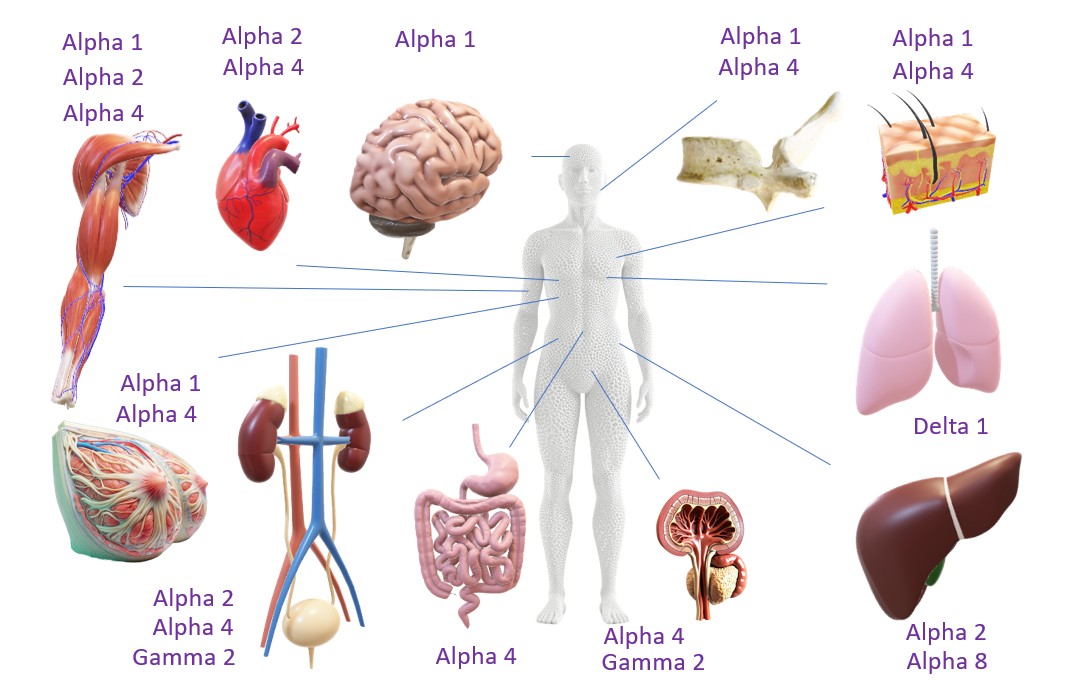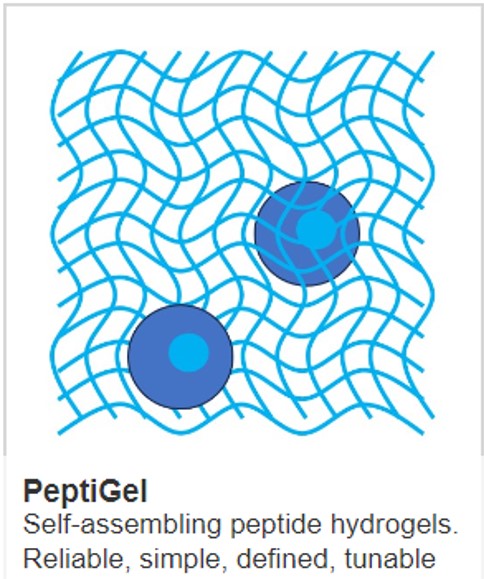Choosing a cell culture hydrogel

Hydrogels are gel-like materials containing networks of linked polymers swelled with water. Hydrogels that can be used for cell culture come in a huge variety of forms and are used to replicate the function of the extracellular matrix (ECM) – the material which surrounds and supports cells in our tissues. This ECM is itself a complex hydrogel.
As well as providing physical support and allowing the passage of molecules to and from the cell, the ECM contains functional motifs which anchor and instruct the cells. The composition of the ECM varies significantly between different tissue types. For example, the ECM found in tendons connecting muscle to bone contains large amounts of proteoglycans.
Hydrogel criteria
In cell culture, the ideal hydrogel closely replicates the functionality of the native ECM in which that particular cell type is normally found. Factors that are taken into consideration when choosing a hydrogel for cell culture include:
Tunability – can functional groups be readily added, and can the elasticity (stiffness) of the hydrogel be modified?
Functionality – Are functional motifs such as RGD and laminin available?
Biodegradability – Generally desirable to allow the migration of cells. Ultimately, the cells will generate their own ECM. However, too rapid degradation may provide insufficient time for this to occur. Biodegradability is also important for translational applications into the clinic.
Charge – sometimes overlooked, the charge of a hydrogel can have a significant impact on suitability for a particular cell type
East-to-handle – Hydrogels need to be mixed with cells and then transferred into culture wells. Once deployed, chemical or UV cross-linking, for example, can be used to achieve this. Ions present in cell culture media can also significantly increase cross-linking and gel stiffness.
Defined – animal-derived hydrogels, in particular, are a complex black box with their impact on cells poorly understood.
Analysable – It should be possible to recover cells from the hydrogel for analysis and also to analyse them whilst they are still embedded in the gel
Animal-free – Animal-derived hydrogels are batch-variable, have suffered significant supply issues, can’t be readily translated into the clinic and have ethical challenges.
Tunability: Each cell and tissue has a distinct extracellular matrix including charge, elasticity and functional motifs. Tuning a gel to replicate these properties is critical.
Hydrogel types
The hydrogel alternatives which are being most widely used include:
- Plant-derived hydrogels.
Examples: alginate (derived from brown seaweed), agarose (red seaweed) and cellulose (e.g Growdex®, from wood pulp)
- Animal-derived hydrogels
Examples: gelatin (typically derived from pig cartilage), collagen (skin or tendon), fibrin (blood), Jellagen® (jellyfish), and (e.g. Matrigel®) tumours grown in mice))
- Synthetic hydrogels
Examples: polyacrylamide (only suitable for 2D cell culture) and polyethylene glycol (PEG)
- Composite materials
Examples: Gelatin/polysaccharides, peptide/agarose
- Self-assembling polypeptides (SAPHs)
Examples: PeptiGel®
Which hydrogel to use?
Increasingly, researchers are moving away from animal-derived hydrogels towards fully defined gels. These fully defined hydrogels allow a clear understanding of the effect of the hydrogel on the cell culture system. Self-assembling polypeptide hydrogels such as PeptiGel® have a distinct advantage in that they can be defined and constructed from the ground up, carefully adding functionality required for the specific cells being used. PeptiGel® is not just one peptide, but a family. PeptiGel® allows a bespoke approach to ECM rather than one-size-fits all. Learn how PeptiGel has been used to culture a wide variety can help in your research.
IMAGE Tunable self-assembling peptide hydrogels (C) Cell Guidance Systems
For more information on hydrogels:


